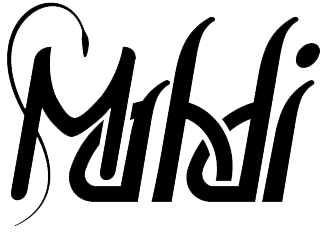
Disinformation employed by certain groups is increasing. Negating them is required. It is essential for every country to have a strong state system and citizens should maintain national loyalty in the face of any attack whether from external or internal enemies
It is no longer a secret that in modern times, wars, internal strife, coups and uprisings are largely incited towards a certain end. Street riots, including the Arab Spring, were fomented in various countries that occasionally resulted in a change of Governments or, as it was with Yugoslavia, in the fragmentation of countries, have turned out to be orchestrated and manufactured by organised masterminds. Of course, there are a variety of reasons behind this, such as causing instability in countries that are planned to be exploited for their natural resources; toppling undesired or rogue Governments; and sparking wars.
For certain circles, wars are considered a necessity to stimulate the economy during times of economic crises or to reinvigorate the weapons’ market. To this end, sectarian disputes are instigated, previously unmentioned ‘democracy’ movements are organised, or as it was in Iraq, actions are taken under the pretense of ‘possession of chemical weapons’. And the method employed is to wage a disinformation propaganda effort involving the use of media, particularly social media, to further this goal.
In wars, conflicts and uprisings, propaganda always plays a key role. Propaganda can be grouped into three categories: White, black and grey. White propaganda has a clear source; and regardless of its content, it never poses a serious threat. Black propaganda is the type of propaganda that comes from a friendly source but is conducted with a hostile attitude. Grey propaganda, however, is the most insidious among them. In addition to having an ambiguous source, it usually relies on fabricated stories, in other words, disinformation. It is produced by enemy sources and conducted via the use of collaborators within. The aim is often to smear and disparage the enemy and to defeat the adversarial party by arousing public interest.
One of its most distinct examples was seen in the Gulf War. The oil-covered cormorant frequently featured by certain international mainstream media outlets became the symbol of the period. Through this said cormorant, a fiction was created over the ill-effects of Saddam’s oil on the world; and the image effectively paved the way for the Gulf War which would result with the US’s victory.
But the true story behind the cormorant photograph was revealed only after the war. As it turned out, the said photograph was taken after a petroleum tanker had foundered off the French Coast. The cormorant was covered in the oil spilt from a tanker off the French coast; it had nothing to do with neither the Gulf nor Saddam.
Another example of this kind of propaganda is the disinformation that was used as an excuse for the Iraq War. The Chilcot Report, disclosed in 2016, revealed the fact that chemical weapons, presented as a justification for the Iraq War, had actually never been in Iraq’s possession. The apology offered by Blair, the perpetrator of the said attacks, could not prevent the loss of two million innocent lives.
The Libya War, just like the one in Iraq, emerged as a part of the ‘New Design of the Middle East’ project. The fact that this war, just as the Iraq War, was “based on lies, bogus intelligence and NATO supported and armed rebels in Libya” was confirmed by a report of the British Parliament. However, until the disclosure of the report, British warplanes, acting upon false justifications, took off from Britain’s Akrotiri and Dhekelia bases on Cyprus and dropped bombs on 15,000 civilians in Libya. Once again, the British Government admitted to the falsehood of the situation only after the damage had been done, and this scenario came at the expense of 15,000 martyrs and a Libya that would never recover its stability.
The Mossadegh coup d’etat in Iran and the subsequent unsuccessful coup attempts against Gaddafi are other prominent examples of grey propaganda. It needs to be emphasised here that these examples provided are in no way intend to justify dictatorships like those of Saddam or Gaddafi; they are only to reveal the horrifying anti-democratic, particularly violent method spread by gray propaganda and its organised conduct. The coup attempt of July 15 that took place in Turkey was also subjected to grey propaganda in support of the Fetullah Terrorist Organisation through fake news. While the coup attempt was still underway, the fake news that the coup attempt was successful began appearing on certain international mainstream media, while certain well-known names disseminated the news that President Erdogan had fled the country. As the coup attempt went on, New York Times, The Guardian, CNN, BBC, The Washington Post, The Times and Der Spiegel, in particular, many media outlets made numerous supportive broadcasts in favour of the coup attempt. These news reports, that were essentially presented in an apparent confidence towards the imminent success of the coup attempt, were met with a massive public outcry in Turkey.
Lately, there has been a conspicuous effort of intensive disinformation and grey propaganda that is also pursued within the scope of the Afrin operation conducted by Turkey in Syria. The fake news being disseminated over social media, in particular, is a picture that we have come to know from the Gezi incidents. Likewise, the propaganda articles, particularly those published in mainstream media outlets that denounce the Afrin operation — and Turkey in general —are all part of an organised effort conceived against Turkey’s perfectly justified operation.
This is not the first, nor will it be the last time we are faced with the methods of disinformation employed by certain groups. We sincerely hope that these will not lead to massive wars and uprisings in the future. We hope that the people of the Middle East have learned from their experiences and no longer fall for these schemes. There are also ways to negate disinformation. The chief among them is the immediate disclosure of the fake news and all kinds of propaganda, especially at the hands of the Government that is subjected to it. The second and the most vital method is by way of winning people’s hearts and building a national awareness.
Against the Turkish people who have developed a national awareness, the disinformation efforts proved utterly ineffective in the Gezi incidents, the coup attempt of July 15 and the Afrin operation. In nations with a developed national awareness, people retain an unswerving allegiance to their State that no external influence can undermine. This is why it, is absolutely essential that every country has a strong State system and people maintain keen national and spiritual loyalty in the face of any and all attacks carried out both externally and internally through insidious spies.
Adnan Oktar's piece in The Pioneer (India) & GIDSS (USA) & Al Bilad (Canada) & Jefferson Corner (USA):
http://www.dailypioneer.com/columnists/oped/grey-propaganda-and-insidious-operations.html
http://gidss.com/content/gray-propaganda-and-insidious-operations
http://www.jeffersoncorner.com/grey-propaganda-and-insidious-operations/




